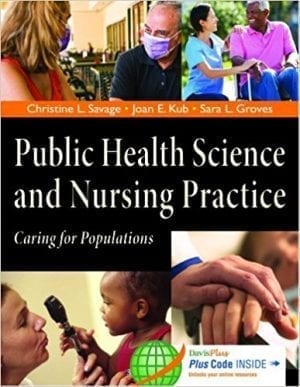Test Bank for Advanced Assessment Interpreting Findings and Formulating Differential Diagnoses 3rd Edition by Goolsby
Table of Content
Table of Contents
Chapter 1. Assessment and Clinical Decision-Making: Overview Chapter 2. An Overview of Genetic Assessment Chapter 3. Skin Chapter 4. Head, Face, and Neck Chapter 5. The Eye Chapter 6. Ear, Nose, Mouth, and Throat Chapter 7. Cardiac and Peripheral Vascular Systems Chapter 8. Respiratory System Chapter 9. Breasts Chapter 10. Abdomen Chapter 11. Genitourinary System Chapter 12. Male Reproductive System Chapter 13. Female Reproductive System Chapter 14. Musculoskeletal System Chapter 15. Neurological System Chapter 16. Nonspecific Complaints Chapter 17. Psychiatric Mental Health Chapter 18. Pediatric Patients Chapter 19. Pregnant Patients Chapter 20. Older Patients
Chapter 1. Assessment and Clinical Decision-Making: Overview
Multiple Choice
Identify the choice that best completes the statement or answers the question.
____ 1. Which type of clinical decision-making is most reliable?
| A. | Intuitive |
| B. | Analytical |
| C. | Experiential |
| D. | Augenblick |
____ 2. Which of the following is false? To obtain adequate history, health-care providers must be:
| A. | Methodical and systematic |
| B. | Attentive to the patient’s verbal and nonverbal language |
| C. | Able to accurately interpret the patient’s responses |
| D. | Adept at reading into the patient’s statements |
____ 3. Essential parts of a health history include all of the following except:
| A. | Chief complaint |
| B. | History of the present illness |
| C. | Current vital signs |
| D. | All of the above are essential history components |
____ 4. Which of the following is false? While performing the physical examination, the examiner must be able to:
| A. | Differentiate between normal and abnormal findings |
| B. | Recall knowledge of a range of conditions and their associated signs and symptoms |
| C. | Recognize how certain conditions affect the response to other conditions |
| D. | Foresee unpredictable findings |
____ 5. The following is the least reliable source of information for diagnostic statistics:
| A. | Evidence-based investigations |
| B. | Primary reports of research |
| C. | Estimation based on a provider’s experience |
| D. | Published meta-analyses |
____ 6. The following can be used to assist in sound clinical decision-making:
| A. | Algorithm published in a peer-reviewed journal article |
| B. | Clinical practice guidelines |
| C. | Evidence-based research |
| D. | All of the above |
____ 7. If a diagnostic study has high sensitivity, this indicates a:
| A. | High percentage of persons with the given condition will have an abnormal result |
| B. | Low percentage of persons with the given condition will have an abnormal result |
| C. | Low likelihood of normal result in persons without a given condition |
| D. | None of the above |
____ 8. If a diagnostic study has high specificity, this indicates a:
| A. | Low percentage of healthy individuals will show a normal result |
| B. | High percentage of healthy individuals will show a normal result |
| C. | High percentage of individuals with a disorder will show a normal result |
| D. | Low percentage of individuals with a disorder will show an abnormal result |
____ 9. A likelihood ratio above 1 indicates that a diagnostic test showing a:
| A. | Positive result is strongly associated with the disease |
| B. | Negative result is strongly associated with absence of the disease |
| C. | Positive result is weakly associated with the disease |
| D. | Negative result is weakly associated with absence of the disease |
____ 10. Which of the following clinical reasoning tools is defined as evidence-based resource based on mathematical modeling to express the likelihood of a condition in select situations, settings, and/or patients?
| A. | Clinical practice guideline |
| B. | Clinical decision rule |
| C. | Clinical algorithm |
| D. | Clinical recommendation |



